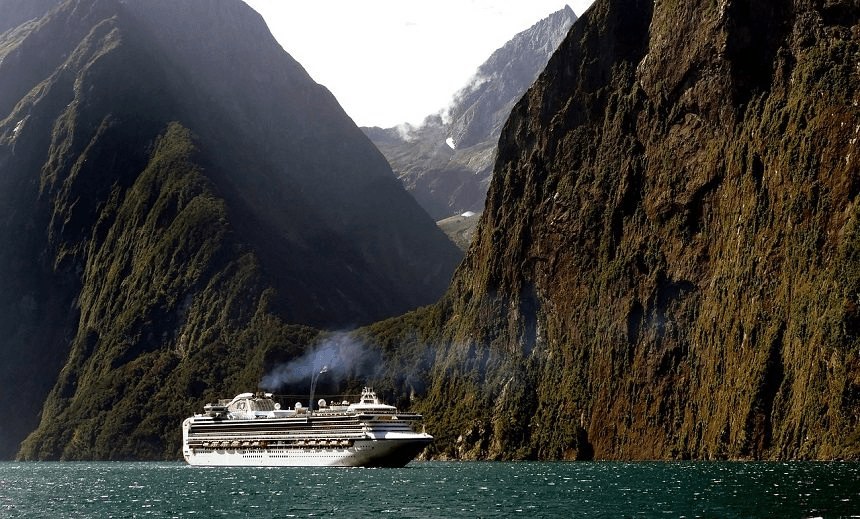As visitor arrivals reach unprecedented levels and our environment and infrastructure buckle beneath the pressure, Don Rowe argues that it’s time tourists paid their fair share.
New Zealand has the highest rate of threatened species in the world. Birds, dolphins, bats – you name a family, we’ve got a species on the precipice of extinction. Our rivers are the stuff of nuclear meltdowns and Beijing gutters. OK that last point is hyperbole, but while we’re arguing semantics, the government legitimately considers ‘wadeable and boatable’ water a reasonable goal.
And yet DoC’s funding continues to be slashed – or massaged, depending on who you ask.
It’s time for a border fee. Wait, not a fee, that’s too pejorative. And definitely don’t say tax. Jesus Christ, do not say tax. What about a contribution? A border contribution. I say $20.
Twenty bucks, a Queen Liz, less than a 12 box of Waikato, less even than your average worker on minimum wage pays in tax every single day.
There were three and a half million visitors to New Zealand last year. Charge them all the price of a coffee and lunch, and we’ve raised more than $60,000,000 for the conservation and preservation of our country.
When we need to pay for a new road, we smack a toll on it. Nothing excessive, but, cumulatively, huge sums of money can be raised.
AUT tourism lecturer Simon Milne told Radio NZ in May last year that research shows visitors are much more willing and happy to pay a border tax if you can show the money is going back into the resources they use, the environment they enjoy, and the culture that surrounds it. A brief scan of Givealittle would similarly indicate people are generally willing to spend cash to help out – how’s enjoying one of the most incredible natural landscapes on earth as a pledge reward? Top tier stuff, those Alps.
There’s an international precedent for charging for the environment – one that has caught DoC’s attention in recent days. Overseas, in countries like Canada, Chile, Argentina and the USA, national parks charge entry fees, mostly directed back into the parks themselves.
The Department of Conservation is currently legislatively prevented from charging for access, but director general Lou Sanson, speaking on Radio New Zealand’s Morning Report, indicated DoC will recommend the government adopt a pay model somewhere between Chile and Argentina’s high volume/high quality approaches, focusing on areas like the Franz Glacier, which receives an incredible 6000 visitors a day, and the Milford Sounds, currently receiving around 3000 a day.
I say we take it a step further – as Environmental Defense Society lawyer Marie Brown wrote last year, the entirety of New Zealand is a national park. Let’s start charging like it.
Sanson himself stated this morning that expected visitor numbers overall are rising to unprecedented levels, up two million on last years numbers to 5.5 million ($110 million under the Don Rowe contribution). The facilities our visitors enjoy aren’t exclusively DoC operations.
Problems with freedom camping have cropped up in the media repeatedly over the past few years. Locals in some places have turned vigilante, locking down carparks and attempting to move on belligerents. Anecdotally, while hitch hiking outside Hokitika recently, a DoC worker bemoaned the state of the sites under his remit, and spoke of being threatened and heavied by ex-Israeli army conscripts regularly, then cleaning up their shit.
In Auckland alone, 29 new freedom camping locations have been opened to ease pressure on busy hotspots. Tourism New Zealand aren’t stoked, especially with the council looking to increase rates on accommodation providers, but Councillor Linda Cooper disagrees, saying these aren’t the ‘same tourists’ who would use their accommodation anyway.
If that’s the case, again I ask, what are they contributing?
$20 at the border would be a lovely start.



